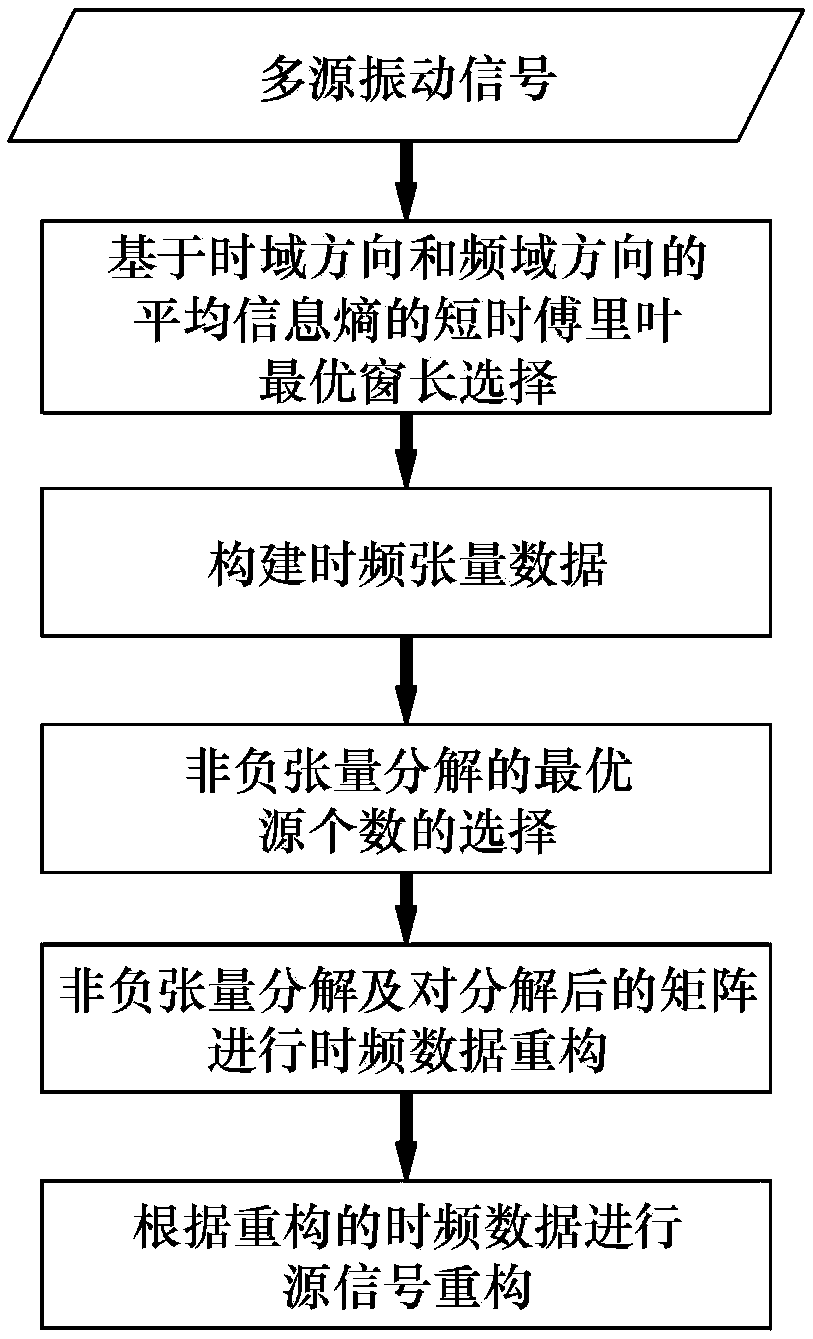A multi-source signal separation method based on non-negative tensor decomposition
A non-negative tensor decomposition and source signal technology, applied in measuring devices, measuring ultrasonic/sonic/infrasonic waves, instruments, etc., can solve the problem of reducing the source signal decomposition effect, unable to adapt to different vibration signal characteristics, and unable to fully characterize the source signal vibration Features and other issues
- Summary
- Abstract
- Description
- Claims
- Application Information
AI Technical Summary
Problems solved by technology
Method used
Image
Examples
Embodiment Construction
[0031] The present invention will be described in detail below in conjunction with the accompanying drawings and embodiments.
[0032] refer to figure 1 , a multi-source signal separation method based on non-negative tensor decomposition, including the following steps:
[0033] Step 1: Generate four typical analog signals, namely, FM-AM signal, AM signal, AM-FM signal and periodic impact signal. Among them, the FM-AM signal simulates the meshing vibration of gears, and the carrier frequency and modulation frequency are respectively 750Hz and 25Hz. The carrier frequency and modulation frequency of the AM signal are 400Hz and 10Hz respectively, the carrier frequency and modulation frequency of the AMFM signal are 210Hz and 60Hz respectively, the oscillation frequency of the periodic impact signal is 3000Hz, and 2000 data points of each signal are taken. Get the multi-source vibration signal A 2000×4 , whose waveform and spectrum refer to figure 2 and image 3 shown;
[003...
PUM
 Login to View More
Login to View More Abstract
Description
Claims
Application Information
 Login to View More
Login to View More - R&D
- Intellectual Property
- Life Sciences
- Materials
- Tech Scout
- Unparalleled Data Quality
- Higher Quality Content
- 60% Fewer Hallucinations
Browse by: Latest US Patents, China's latest patents, Technical Efficacy Thesaurus, Application Domain, Technology Topic, Popular Technical Reports.
© 2025 PatSnap. All rights reserved.Legal|Privacy policy|Modern Slavery Act Transparency Statement|Sitemap|About US| Contact US: help@patsnap.com



